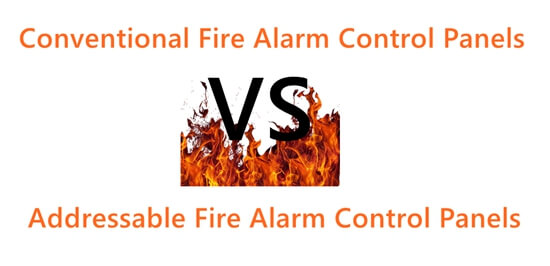Fire alarm control panels (FACPs) are the brains of any fire safety system, monitoring sensors and triggering alarms during emergencies. Understanding the two main types—conventional and addressable control panels—helps you choose the right system for your property. Let’s break them down in simple terms.
1. Conventional Fire Alarm Control Panels
Conventional panels divide a building into broad "zones" (e.g., floors or sections). Each zone contains multiple devices (smoke detectors, pull stations) wired to the panel.
How It Works:
- Devices in a zone share a single circuit.
- The panel identifies a fire’s general location (e.g., "Zone 3: Second Floor") but can’t pinpoint exact devices.
Pros:
- Cost-Effective: Lower upfront costs for small buildings.
- Simple Installation: Ideal for straightforward layouts.
Cons:
- Limited Precision: Only identifies zones, not specific devices.
- Maintenance Challenges: Troubleshooting requires checking entire zones.
Best For: Small spaces like shops, offices, or single-story homes.
2. Addressable Fire Alarm Control Panels
Addressable panels assign a unique "address" to each device (e.g., smoke detector #45 in Room 205). This allows precise monitoring and advanced diagnostics.
How It Works:
- Devices communicate digitally over a looped circuit.
- The panel displays exact device locations and status (e.g., "Smoke Detector #205: Fault Detected").
Pros:
- Pinpoint Accuracy: Identifies exact device locations.
- Advanced Features: Self-diagnostics, real-time updates, and scalability.
- Reduced False Alarms: Filters non-emergency triggers (e.g., dust).
Cons:
- Higher Cost: More complex technology raises initial investment.
- Installation Expertise: Requires trained professionals.
Best For: Large or complex buildings (hospitals, schools, high-rises).
Key Differences at a Glance
| Feature | Conventional Panel | Addressable Panel |
|---|---|---|
| Location Precision | Zone-level | Device-level |
| Cost | Budget-friendly | Higher initial cost |
| Complexity | Simple | Advanced |
| Ideal Property Size | Small to medium | Medium to large |
Which Should You Choose?
- Consider Your Building: Small, simple spaces? Conventional works. Large or multi-room? Go addressable.
- Budget vs. Needs: Addressable systems offer long-term value for critical environments.
- Future-Proofing: Addressable panels adapt more easily to expansions or upgrades.
Final Thoughts
Both conventional and addressable fire alarm control panels save lives, but their applications differ. Conventional systems suit smaller budgets and simpler layouts, while addressable panels provide precision for complex environments. Always consult a fire safety professional to ensure compliance with local regulations and optimal protection.
-
 What to Do If Your Fire Alarm Panel Is Beeping
What to Do If Your Fire Alarm Panel Is BeepingDo you like ?0
Read more -
 How to Check Your Fire Alarm Control Panel ?
How to Check Your Fire Alarm Control Panel ?Do you like ?0
Read more -
 How a Fire Alarm Control Panel Works
How a Fire Alarm Control Panel WorksDo you like ?0
Read more -
 Fire Alarm Control Panel: The Central Hub of Building Safety (2025 Guide)
Fire Alarm Control Panel: The Central Hub of Building Safety (2025 Guide)Do you like ?0
Read more -
 How to Respond When Your Fire Alarm Control Panel Sounds an Alert ?
How to Respond When Your Fire Alarm Control Panel Sounds an Alert ?Do you like ?0
Read more -
 What is a Fire Alarm Control Panel (FACP) and How Does It Work?
What is a Fire Alarm Control Panel (FACP) and How Does It Work?Do you like ?0
Read more









